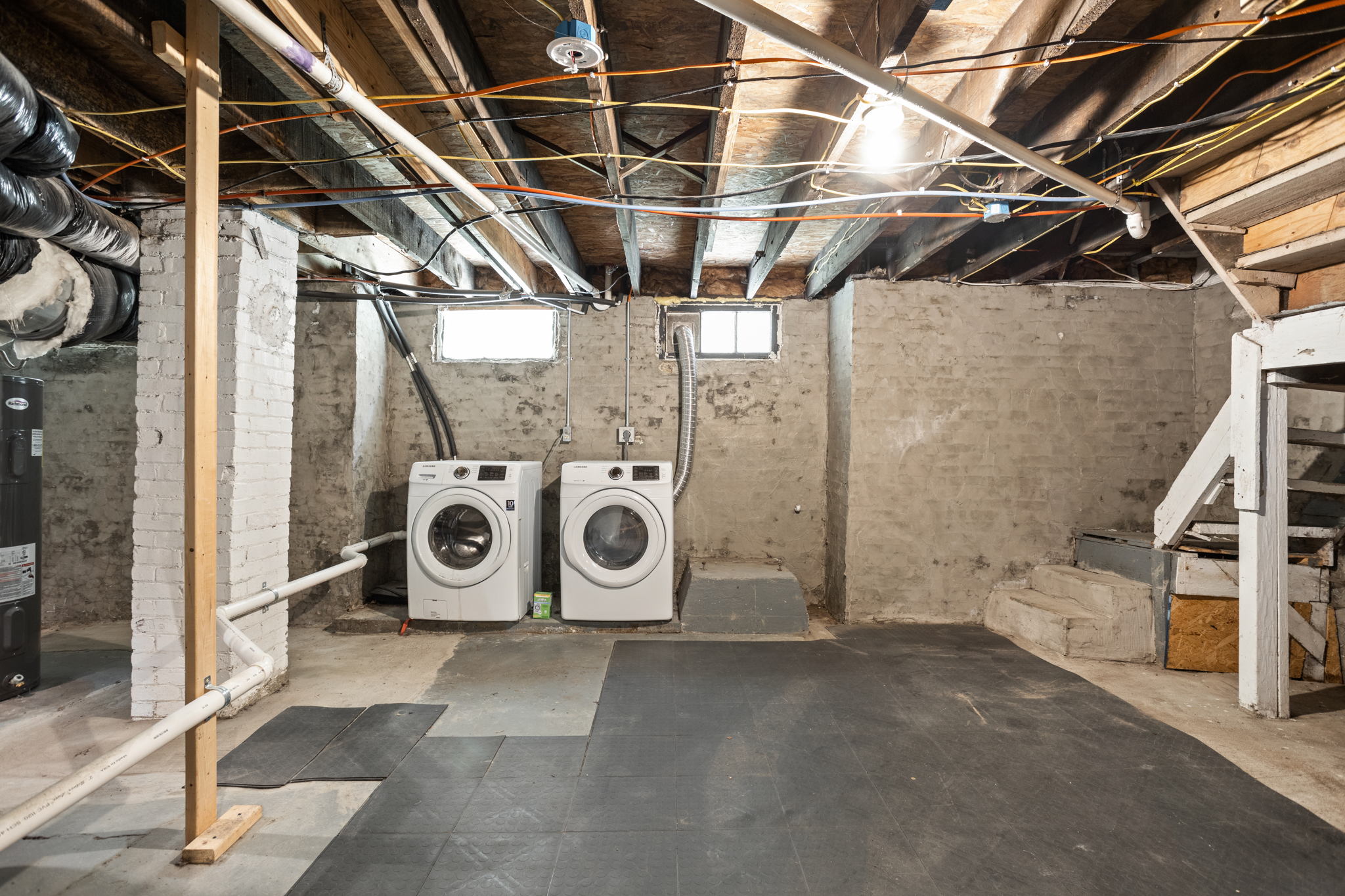
Basements—chances are, you have a strong preference either for or against them. In some parts of the country, like the south, preference doesn’t matter since basements are not prevalent. But here in central Indiana, having a basement can be a huge benefit for three important reasons: space, extra space, and more space!
Depending on the type of home you own, there are a few types of basements you might have. Here are the most popular types, from least to most room added, how to tell them apart, as well as their advantages and disadvantages:
Crawl space

By far the smallest type of basement in this list, most crawl spaces serve only to allow access to different systems, like plumbing, HVAC or sewage piping, while others allow air to flow beneath a home. According to data from the Survey of Construction, roughly 15% of new single-family homes have a crawl space foundation installed. True to its name, a crawl space will generally only be big enough to crawl in.
Common characteristics of a crawl space basement:
- They will often have exposed pipes to your home’s systems so you can access utility fixtures like air conditioners and heating units, plumbing, and wires.
- They often have dirt floors.
- They may or may not have windows.
- They are not suitable as a separate living space (unless you’re this guy, I guess).
Pros and cons of a crawl space basement:
- Pro: they work in a wide variety of building circumstances. For example, in earthquake-prone areas, a crawl space foundation is more likely to keep the house upright than a slab foundation, which will crack from the force.
- Con: although a crawl space will help keep your home cool in the summer, a large void of cool air immediately under your home is extremely energy inefficient during the winter, and you’ll often spend money to heat the crawl space. You can fill it with insulation, but this removes some of the other benefits, like storage and access to utility fixtures.
- Pro: Since very few lots are perfectly level, a crawl space foundation allows you to create a level platform by varying the length of the piers in the base.
- Con: Because crawl spaces get heated by the house above, they can be attractive places for rodents and other pests. If rodents do make nests in your crawl space, it can be a while before you notice, and by then, they may have spread to other parts of your home.
- Pro: If you have built on a flood plain, then a crawl space also serves to raise your home above ground level. Those 18 inches could be the difference between a minor annoyance and a major disaster.
- Con: Crawl spaces are prone to being damp and, if they are damp for an extended period of time, they can damage the structure of the home. In many cases, the presence of moisture can also lead to mold infestations.
Cellar (or full) basement
Depending on what part of the world you’re from, a cellar and a basement could mean the same thing. In New York City, for example, if a basement is more than halfway underground, it’s considered a cellar (and disallows garden apartments). But here in Indiana, locals call the full basement in their homes a cellar, regardless of where it hits ground level.
Features of a cellar:
- Typically fully underground and used for storage.
- Can be finished to allow for an extra level of living space.
- Can be full—covering the entire footprint of the house—or partial—covering only a portion of the home.
- Different from a wine cellar or a root cellar, which you add to an existing space or make into a separate space of their own.
Pros and cons of a cellar basement:
- Pro: Adds square footage to the size of your home without increasing the house’s physical footprint.
- Con: More expensive to build and can result in additional maintenance.
Daylight or walkout basement

A daylight basement is similar to a cellar with one distinction—only about half the space is below ground level, so it’s not completely underground. Many newer homes boast this type of basement as an attractive feature, since they almost always provide ample living space that’s finished and livable.
Some features and characteristics of a daylight basement:
- Generally has windows above ground level, and may even have a door that leads outside.
- The space is the same height as a standard floor in the home.
- Usually finished to provide extra living space.
The pros and cons of a daylight basement are generally the same as a cellar basement. However, one advantage of a daylight basement is that they are more suitable to build on uneven ground since the basement may be below ground on one side of the house, and above it on the other.
If you’re thinking about making an improvement to your house, like finishing the basement, and wondering what return you can expect to see on that investment—let me know! Give me a call at 317-379-7720 or email courtney@locallivinggroup.com.
Social Cookies
Social Cookies are used to enable you to share pages and content you find interesting throughout the website through third-party social networking or other websites (including, potentially for advertising purposes related to social networking).